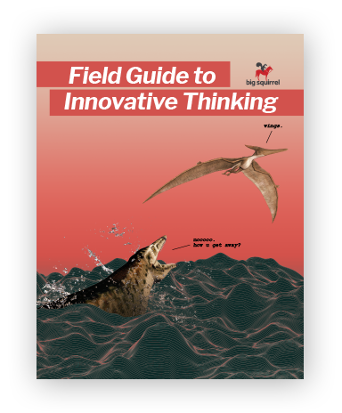Most people can think of ways to do something better, faster, or in a manner that’s more cost-efficient. When individuals work together as a team to improve products and processes, the results can be impressive. However, too many organizations settle for “good enough.” Is your organization stuck in this rut? Learn what your business can do to create an environment in which creativity flourishes.
1) Start at the Top
When leaders are focused solely on the bottom line, they inadvertently create an environment that discourages creativity. If the boss applies extreme pressure and has little tolerance for mistakes, employees feel constant tension. They focus on completing assigned tasks as quickly as possible without making errors–and that’s all. This fosters a tense company culture and diminishes creativity. Teamwork suffers, morale drops and productivity declines.
Effective leaders know how to nurture each staff member’s abilities so creative juices can flow. They lead by example, with an easygoing attitude and willingness to listen and ask, instead of giving orders. The resulting positive feedback and constructive criticism builds an efficient and dedicated team of employees.
2) Hire Innovators
When people believe in what they do, their job is not just a means to an end: it becomes a personal mission. Identify your company’s current culture and goals, then hire employees who are passionate about issues that relate to your products and services. Look for team members who can articulate your company’s vision because it aligns with their own.
This doesn’t mean that all hires must think and act the same. Think of diversity beyond gender and ethnicity. Focus on all the factors that inform a fresh perspective. Things like age, veteran status, educational background and hobbies. When your team is comprised of individuals with a wide range of experience and multiple points of view – who are all passionate about what your company offers – you create an environment ripe for innovation to flourish.
To get a sense of the distinct perspectives potential employees can bring to the table, be willing to ask creative questions during the interview phase. Here are some examples:
- Which major societal challenge would you like to see improved? If you were in charge, how would you go about tackling it?
- In three minutes, explain to me a complicated issue that you know well.
- If you had $25,000 to build your own business, what would you do? Where would you start?
- Tried-and-true solutions sometimes fail. Describe a time when the go-to solution didn’t work. How were you able to solve the problem?
Check out our Field Guide to Innovative Thinking
to help your team think outside the nut!
3) Use Innovation Sprints
People often settle into workplace habits and behavior patterns because it seems like the path of least resistance. Employees are busy answering emails, making phone calls, attending meetings and completing their job tasks. There’s no time to think creatively.
Work sprints are based on an agile methodology that accomplishes tasks in a series of stages. Teams identify a problem to solve, break it down and assign responsibilities, then set a very limited time frame to accomplish a specific goal. At the end of the time frame, team members gather to present their solutions. All stakeholders evaluate progress, suggest refinement, and develop the next goal.
Sprints are the antidote to workplace apathy. They carve out time for focused, intense spurts of innovation. In his book, Sprint: How to Solve Big Problems and Test New Ideas in Just Five Days, author Jake Knapp outlines a detailed process for developing creative solutions in limited periods of time. This structured forward momentum allows your business to cover ground quickly, co-create solutions, and make effective changes.
4) Encourage Positivity
When your team members put more effort into creativity, they open themselves up to judgment from peers and superiors. It’s a vulnerable position. This resultant pressure can become overwhelming and frustrating if teammates respond with negativity. But since creative problem solving necessitates open debate, navigating this landscape can get tricky.
Encourage brainstorming by employing a “no criticism” directive. Provide guidelines for phrasing feedback in a positive manner. When your staff feels supported and respected for their contributions, the pressure they feel can yield positive results.
Big Squirrel helps brands ask the right questions, articulate roadmaps for how to think differently, and ultimately instill confidence to activate ideas. Contact us to “get cracking!”
